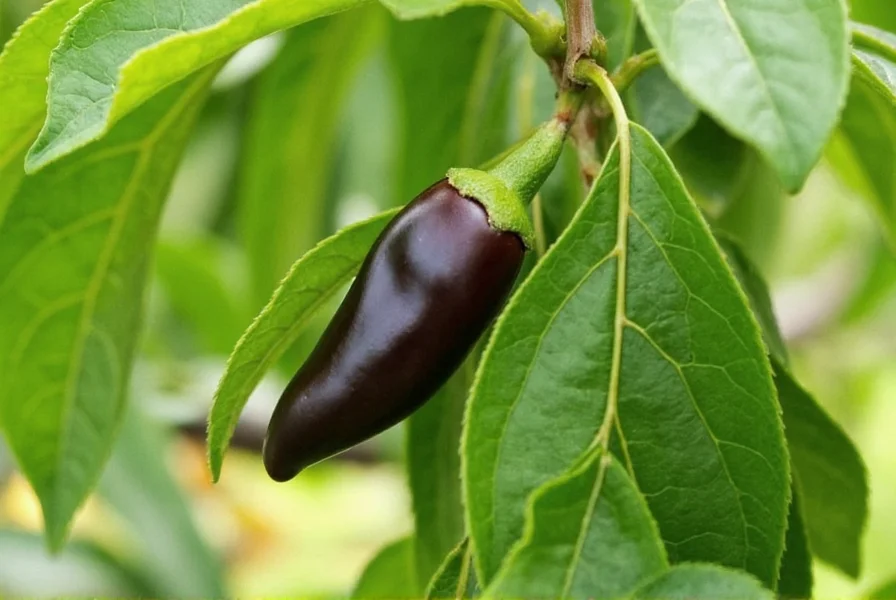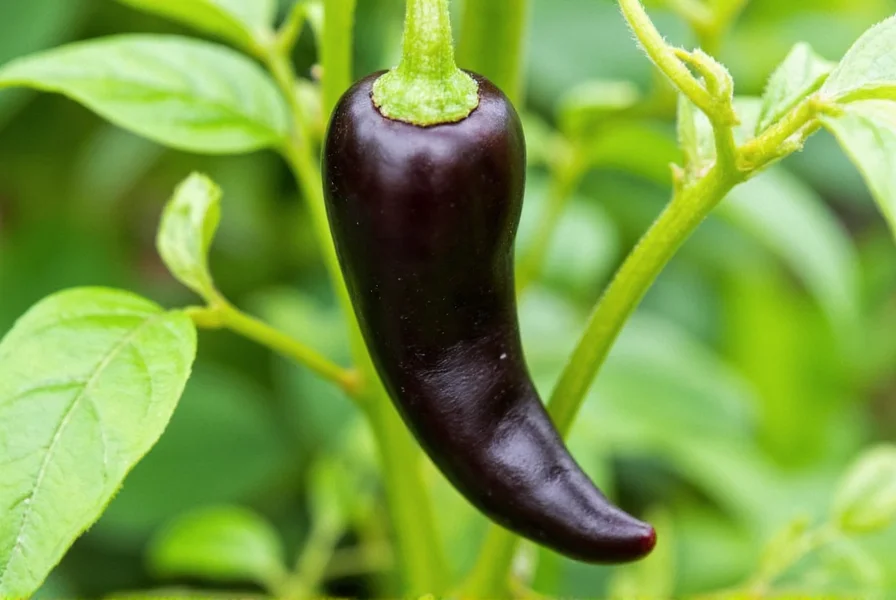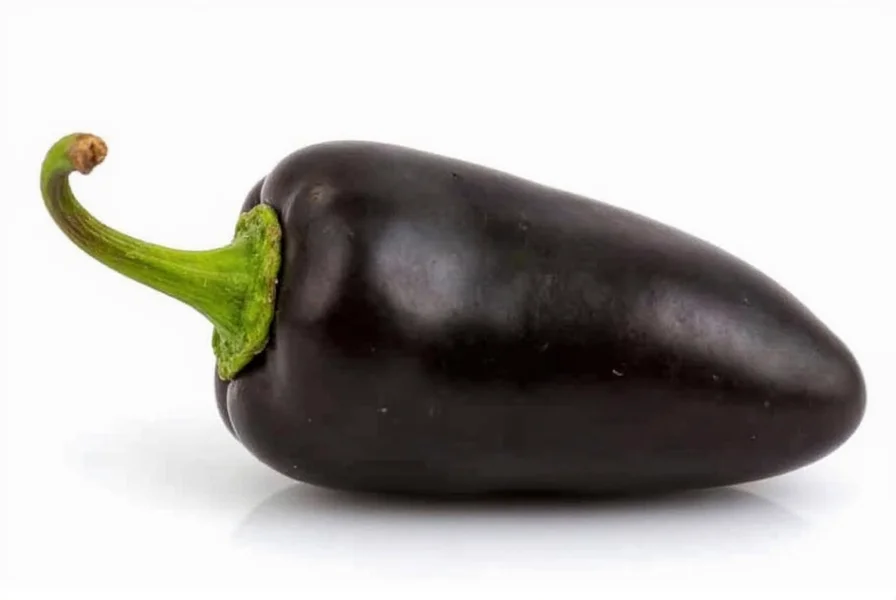Among the most visually distinctive chili peppers available to gardeners and culinary enthusiasts, the Black Cobra pepper stands out with its dramatic color transformation and balanced heat. This hybrid variety, developed through selective breeding of Capsicum annuum species, has gained popularity for both its ornamental value and culinary versatility. Unlike many super-hot peppers that prioritize extreme heat above all else, the Black Cobra offers a moderate spice level that makes it accessible to a wider range of palates while maintaining enough kick to satisfy chili lovers.
Origin and Development
Breeding efforts in the early 2000s produced the Black Cobra pepper as part of a trend toward developing ornamental chili varieties with unique coloration. While not as widely documented as some commercial varieties, this pepper emerged from crosses between other dark-colored peppers like Black Hungarian and potentially some Thai pepper varieties. The Black Cobra doesn't appear in official seed registries under standardized names, which explains why many gardeners encounter it through specialty seed companies rather than major agricultural suppliers.
Physical Characteristics and Maturation Process
The most striking feature of the Black Cobra pepper is its dramatic color transformation throughout its growth cycle:
| Growth Stage | Color | Size | Flavor Notes |
|---|---|---|---|
| Immature | Deep purple to black | 2-3 inches long | Earthy, slightly bitter |
| Intermediate | Purple streaked with red | 2.5-3.5 inches | Smoky, developing sweetness |
| Mature | Bright red | 3-4 inches | Sweet, fruity, complex |
The peppers grow in an upward-facing orientation on compact plants that typically reach 18-24 inches in height, making them suitable for container gardening. Their distinctive snake-like curling shape contributes to the "cobra" portion of their name.

Heat Level and Flavor Profile Analysis
With a Scoville rating between 5,000-15,000 units, the Black Cobra pepper falls in the moderate heat range—comparable to a standard serrano but generally milder. What makes this variety particularly interesting to chili enthusiasts is how its heat level changes as it matures:
- Immature (black/purple stage): Higher heat concentration, more earthy and slightly bitter
- Intermediate stage: Balanced heat with developing sweetness
- Mature (red stage): Noticeably sweeter with reduced heat, revealing complex fruit notes
This heat progression makes the Black Cobra exceptionally versatile in the kitchen. Culinary experts who specialize in chili pepper heat comparisons note that few varieties offer such a dramatic flavor evolution from harvest to full maturity.
Growing Requirements for Home Gardeners
Successfully cultivating Black Cobra peppers requires attention to specific growing conditions:
Climate and Temperature Needs
Like most chili varieties, Black Cobra peppers thrive in warm conditions with temperatures between 70-85°F (21-29°C). They require 70-80 days to reach maturity from transplanting. Gardeners in cooler climates should start seeds indoors 8-10 weeks before the last frost date. The distinctive black coloration develops most intensely when daytime temperatures stay consistently above 75°F.
Soil and Water Requirements
These peppers prefer well-draining soil with a pH between 6.0-6.8. Consistent moisture is crucial—allowing the soil to completely dry out between waterings stresses the plants and can reduce fruit set. However, overwatering leads to root rot. Many successful growers of ornamental chili pepper varieties recommend using a balanced organic fertilizer every 3-4 weeks during the growing season.
Common Growing Challenges
While generally robust, Black Cobra pepper plants face several potential issues:
- Pepper mild mottle virus: Causes mottled leaves and stunted growth
- Spider mites: Particularly problematic in dry conditions
- Blossom end rot: Caused by calcium deficiency, appears as dark spots on fruit
- Color inconsistency: Insufficient sunlight prevents proper dark coloration
Culinary Applications and Recipe Ideas
The Black Cobra pepper's flavor complexity makes it valuable in numerous culinary applications. Professional chefs who work with chili peppers for sauces appreciate its balanced heat and flavor profile.
Fresh Applications
Use immature black peppers for:
- Garnishing dishes for dramatic visual contrast
- Adding moderate heat to salsas and fresh relishes
- Infusing vinegars with distinctive color and flavor
Mature red peppers work well for:
- Roasting and blending into complex sauces
- Drying for homemade chili flakes with nuanced flavor
- Adding to jams and chutneys for sweet-heat balance

Preservation Techniques
For gardeners with abundant harvests, several preservation methods maintain the Black Cobra's unique qualities:
- Drying: Results in intensely flavored flakes with preserved color
- Freezing: Maintains fresh flavor for cooking applications
- Pickling: Creates visually striking condiments with complex flavor
- Infused oils: Captures both color and flavor for finishing dishes
Comparison with Similar Pepper Varieties
Understanding how the Black Cobra pepper compares to similar varieties helps gardeners and cooks make informed choices:
- Black Hungarian: Similar coloration but generally hotter (5,000-10,000 SHU vs. Black Cobra's 5,000-15,000 SHU) with more pronounced fruit notes
- Black Pearl: Primarily ornamental, smaller peppers, less culinary value
- Trinidad Scorpion Moruga Black: Dramatically hotter (1,200,000+ SHU) with similar dark coloration but completely different heat profile
- Thai Dragon: Similar size and shape but consistently red with higher, more uniform heat (50,000-100,000 SHU)
Unlike many specialty peppers that prioritize extreme heat, the Black Cobra offers a more accessible spice level while maintaining distinctive visual appeal—making it an excellent choice for gardeners seeking chili peppers for beginners who want something beyond standard jalapeños.
Sourcing Black Cobra Pepper Seeds and Plants
Due to its specialty status, Black Cobra pepper seeds aren't typically available at standard garden centers. Reputable sources include:
- Specialty chili seed companies focusing on unique varieties
- Online seed exchanges with verified grower reviews
- Local gardening clubs specializing in chili cultivation
When purchasing seeds, look for recent harvest dates (within 1-2 years) and verify the seller's reputation through independent gardening forums. Some seed companies market similar varieties under different names, so checking detailed descriptions of mature plant characteristics helps ensure you're getting authentic Black Cobra seeds.
Conclusion: The Black Cobra Pepper's Unique Value
The Black Cobra pepper represents an excellent middle ground for gardeners and cooks seeking something beyond common supermarket varieties. Its dramatic visual appeal, moderate heat level, and flavor evolution throughout maturation offer unique opportunities for both ornamental gardening and culinary experimentation. Whether you're a home gardener looking to add visual interest to your patio containers or a cook wanting to expand your flavor palette with distinctive chili varieties, the Black Cobra pepper delivers distinctive characteristics that justify its growing popularity among pepper enthusiasts.
Frequently Asked Questions
How hot is the Black Cobra pepper compared to a jalapeño?
The Black Cobra pepper ranges from 5,000-15,000 Scoville Heat Units (SHU), making it generally 1-3 times hotter than a typical jalapeño (2,500-8,000 SHU). However, heat can vary significantly based on growing conditions and the pepper's maturity stage, with immature black peppers typically being hotter than fully mature red ones.
Can I grow Black Cobra peppers in containers?
Yes, Black Cobra peppers grow well in containers due to their compact size (typically 18-24 inches tall). Use a 3-5 gallon pot with drainage holes, quality potting mix, and place in a location receiving 6-8 hours of direct sunlight daily. Container-grown plants require more frequent watering and feeding than garden-planted peppers.
Why aren't my Black Cobra peppers turning black?
Insufficient sunlight is the most common reason Black Cobra peppers fail to develop their characteristic dark coloration. These peppers require at least 6-8 hours of direct sunlight daily to produce the anthocyanins responsible for the purple-black color. Temperature extremes (too hot or too cold) and improper watering can also affect color development.
When is the best time to harvest Black Cobra peppers?
Black Cobra peppers can be harvested at any stage, but optimal timing depends on your intended use. For maximum heat and dramatic black color, harvest when fully dark purple/black (about 70 days after transplanting). For sweeter flavor with less heat, wait until they begin showing red streaks or fully ripen to red (80-90 days after transplanting).
Are Black Cobra peppers good for making hot sauce?
Yes, Black Cobra peppers work well for hot sauce production, particularly when harvested at the intermediate stage (purple with red streaks) which offers the best balance of heat and flavor complexity. Their moderate heat level makes them suitable for sauces intended for broader audiences, and their color creates visually distinctive sauces that range from deep purple to vibrant red depending on maturity at harvest.











 浙公网安备
33010002000092号
浙公网安备
33010002000092号 浙B2-20120091-4
浙B2-20120091-4